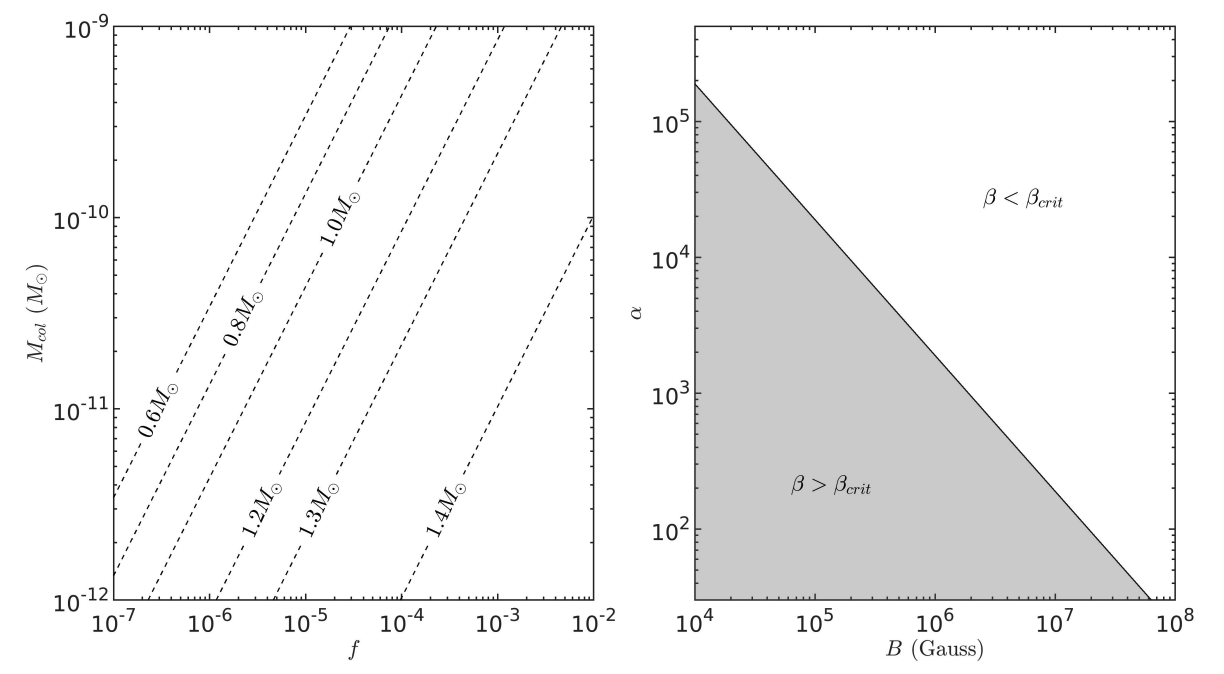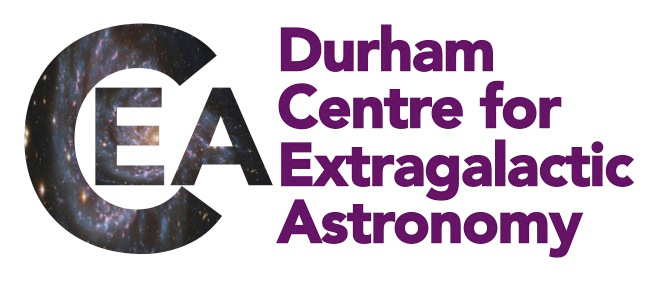CEA News, July 2022
Triggering micronovae through magnetically confined accretion flows in accreting white dwarfs
Rapid bursts at optical wavelengths have been reported for several accreting white dwarfs. In these bursts, the optical luminosity can increase by up to a factor of 30 in less than an hour, before fading on time-scales of several hours, and the energy release can reach ~1039 erg ('micronovae'). Several systems have also shown these bursts to be semirecurrent on time-scales of days to months, and the temporal profiles of these bursts strongly resemble those observed in Type-I X-ray bursts in accreting neutron stars. It has been suggested that the observed micronovae may be the result of localized thermonuclear runaways in the surface layers of accreting white dwarfs.
 Left-panel: Range of column masses required to reach 𝑃𝑏𝑎𝑠𝑒 ≈ 𝑃𝑐𝑟 𝑖𝑡 ≈ 1018 dyn cm−2. The plot
has been computed with a range of WD masses as indicated by the dashed lines. Right-panel: Constraint
on keeping the accretion column magnetically confined up to 𝑃𝑐𝑟 𝑖𝑡 = 1018 dyn cm−2. Gray shaded region
shows regions where the column pressure will be too high and break the magnetic confinement.
Left-panel: Range of column masses required to reach 𝑃𝑏𝑎𝑠𝑒 ≈ 𝑃𝑐𝑟 𝑖𝑡 ≈ 1018 dyn cm−2. The plot
has been computed with a range of WD masses as indicated by the dashed lines. Right-panel: Constraint
on keeping the accretion column magnetically confined up to 𝑃𝑐𝑟 𝑖𝑡 = 1018 dyn cm−2. Gray shaded region
shows regions where the column pressure will be too high and break the magnetic confinement.
In a new paper led by CEA astronomers, a model is proposed in which the magnetic confinement of accretion streams on to the accreting magnetic white dwarf may trigger localized thermonuclear runaways. The model proposed to trigger micronovae appears to favour magnetic systems with both a high white dwarf mass and a high mass-transfer rate.
The paper elaborates and expands in more detail on the possible thermonuclear origin of these fast bursts in AWDs which may give rise to micronovae events. They introduce a model where the surface magnetic fields of AWDs may confine the flow of accreted material on to the WD surface and allow the pressure at the base of the accretion column to reach the critical pressures required to initiate localised TNRs. Some possible limitations to the model and the results in light of the observations of an earlier paper by Scaringi et al. (2022) are also discussed.

